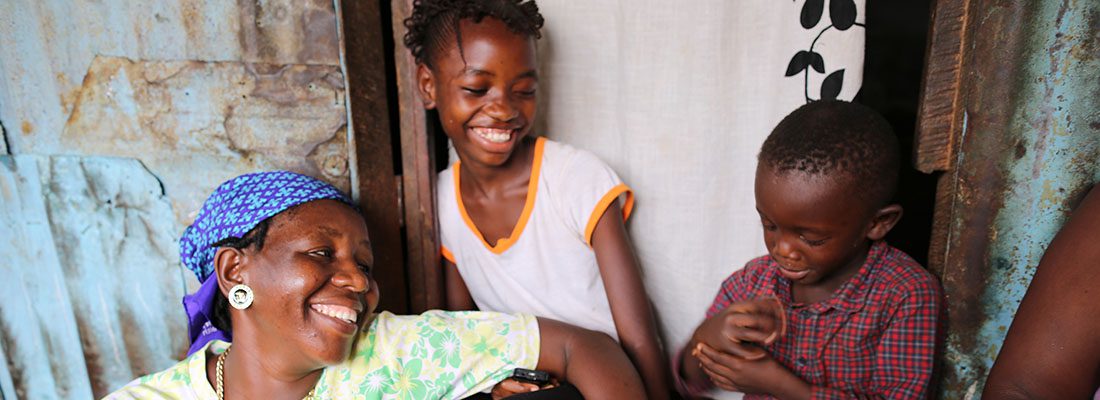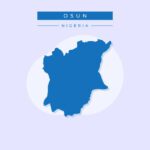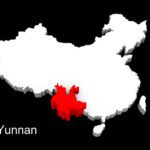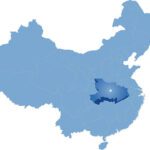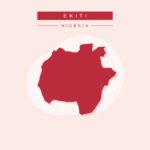Families are the basic unit of society, and their well-being is essential for the overall development of a community or nation. This report provides an overview of family life in the Eastern Province of Sierra Leone. The data for this report was obtained using open-sourced information.
The report’s main objective is to provide a concise overview of the conditional state of families using available family demographic statistics (e.g., number of families, family structure, racial and ethnic diversity, marriage rates, divorce rates, family income, etc.).
This report is written for stakeholders with an interest in family life in the Eastern Province of Sierra Leone. This approach makes certain that the report’s findings are transparent and replicable, and stakeholders can access, verify, and utilize the data sources themselves.
Overview
The Eastern Province is one of the five provinces of Sierra Leone. According to the 2015 census, Eastern Province has a population of 1,641,012 and covers an area of 15,553 km². Its name is derived from its location on the map, bordered with Guinea in the northeast and Liberia in the east and west. The Eastern Province of Sierra Leone is the only region without shorelines. Furthermore, the Eastern Province is known for its diverse geography which includes mountains, plateaus and rivers. Additionally, it is the most mountainous region in Sierra Leone, with two prominent mountain ranges, namely the Gola Hills and the Loma Mountains, and the Gola Hills are recognized as a UNESCO World Heritage Site.
There are three sub-regions also known as districts in the Eastern Province: Kailahun, Kenema, and Kono. The capital of each district is Kailahun, Kenema, and Koidu. On a smaller scale, there are 37 villages that make up the Eastern Province: BAAKA, BAIAMA,BANDAKORO, BOAJIBU,BUEDU, BUNUMBU,CHEGBASIMA, FAAKOR, FAAMA,FANEMA, FOINDU, GBANFAOR, GELEHUN, GIEHUN (NGIEHUN), GIEMA, KAINKORDU, KAMADU, KAYIMA, KOARDU, KOMENDECHA, KOAKOR, KOQUIMA, KUMALA, KUNDIMA, KWIDADU, LALEHUN-TONGO FIELD, MOIMANDU, NGEGBWEMA, PANGUMA, PUJEHUN, SAMBAYA, SEGBWEMA, SEMIBU, TEFEYA, WOAMA, WOLOMA, and YAGBYA.
Abundant mineral resources can be found in the region, including diamonds, gold, and rutile. The Eastern Province is known for being the center of its country’s diamond mining industry. The diamond mines in the Kono District are some of the richest in the world. Besides diamonds, the main crops grown in the province are rice, coffee, cocoa, palm oil, and various fruits and vegetables.
Some of the most popular tourist destinations in the Eastern Province include:
- Gola Rainforest National Park
- Bunumbu
- Segbwema
- Kambui Hill Forest Reserve
- Tiwai Island Wildlife Sanctuary
- Zimmi
Demographics and Ethnic Diversity
The Eastern Province of Sierra Leone has a population of 1,641,012, with the majority of the population residing in the Kenema district. The province is known for its diversity in cultural and ethnic groups. The Mende, Temne, Loko, and Limba are the four largest ethnic groups in the province, while the Kissi, Kono, and Sherbro are among the smaller ethnic groups. Mende (53%) is the most spoken language followed by Kono (17.6%), Kissi (9.1%), and others (20.3%) in the Eastern province. According to the 2015 census, the breakdown of the ethnic groups in the Eastern Province is as follows:
- Mende: 35.5%
- Temne: 33.2%
- Limba: 6.4%
- Kono: 4.4%
- Fula: 3.4%
- Susu: 2.9%
- Loko: 2.9%
- Koranko: 2.8%
- Sherbro: 2.6%
- Mandingo: 2.4%
- Krio: 1.3%
Family Structures and Traditions
While the Eastern Province’s general family structure is not well-defined, the overall family structure in Sierra Leone includes an extended family setup, comprising parents, children, grandparents, uncles, aunts, and cousins living together in compounds. The average family size in Sierra Leone is about 5 individuals, with urban households being slightly smaller than rural households (5.1 persons vs. 5.4 persons). Moreover, many households in Sierra Leone are headed by men, with one parent usually responsible for providing financial support. Typically, women take care of the household and children. Additionally, teenage female students are responsible for cooking meals for the entire family.
Other information concerning families in the Eastern Provinces includes:
- Access to water sources between one and five miles is the lowest for the eastern region.
- Crop farming (98.1 %) is the largest agricultural activity in the Eastern Province, followed by farming (33%), and animal husbandry (25%).
Marriage and Divorce Rate
According to the 2015 Sierra Leone Census, the Eastern Province had a population of 1,167,420. Out of this, 536,724 Sierra Leonans were never married, 35,386 were engaged, 144,075 were in monogamous marriages, and 366,395 were in polygamous marriages. Additionally, 5,720 were cohabiting for less than five years, while 2,249 had been in cohabitation for five years and over, 16,334 were separated, 8,319 were divorced, and 48,380 were widowed.
In Sierra Leone, marriage and divorce laws can be governed by the general law, Islamic law, or customary law. Under the general law, which includes the Christian Marriage Act and the Civil Marriage Act, marriages should be monogamous and have specific requirements to be legally valid. The Islamic law allows men to have up to four wives, provided they can take care of them equally and fairly. On the other hand, customary law marriage formation varies from one ethnic group to another and requires the consent of the wife’s family. Under customary law, a man can marry as many wives as he desires and can afford. For more information, please refer to the link for this citation.
Culture and Heritage
Based on my current knowledge, there are no specific cultural practices specific to the Eastern Province of Sierra Leone. However, in general, the culture and traditions practiced in Sierra Leone are very diverse; most practices are tied to ethnic groups. One example of a cultural practice is called Bondo Society, which is the transition from childhood to womanhood, and the initiation is performed through female circumcision. Young girls and their families celebrate this initiation by buying new clothes for the girls and cooking food for others to celebrate with the family. Additionally, ceremonial dances are common in Sierra Leone, with each ethnic group having specific traditional clothes and dances. Drums, wooden xylophones, and other string instruments are used as background music for cultural festivals. Similarly, wooden masks are used during cultural festivals. For example, Arong Athoma is a carved mask by the Temne people. Lastly, holidays like Christmas and Ramadan are popular holidays to celebrate among the people.
Socioeconomic and Family Well-being
Overall, wealth affords many opportunities in Sierra Leone, for example, better drinking water, education, improved sanitation, access to healthcare, and technology. Individuals with high household wealth fare better compared to those with low household wealth. Sierra Leoneans living in urban rather than rural areas tend to have better economic status. The main economic activities in the Eastern Province are agriculture, mining, and forestry.
Education
Sierra Leone places a high value on education, but unfortunately, the number of people who complete primary and post-primary education remains low. The academic year in Sierra Leone typically starts in September and ends in July, with children starting primary school at the age of 6. The education system is structured in such a way that the primary school cycle lasts for 6 years, the lower secondary lasts for 3 years, and the upper secondary lasts for 4 years. It is mandatory for all children aged 6 years to attend primary school and 3 years in junior secondary school. However, due to a shortage of schools and teachers, implementing this policy has been a challenge. According to a 2019 survey report, 40 percent of the people surveyed in the Eastern Province did not receive any education, while 35 percent received some primary education. Additionally, 3.7 percent completed their education, 17.8 percent received some secondary education, 2.8 percent completed secondary education, and 1.3 percent received more than secondary education. The Kenma district in the Eastern Province has a total of 739 schools (42 pre-primary, 605 primaries, 73 junior secondary schools, and 19 senior secondary schools). Similarly, Kailahun district in the Eastern Province has 410 schools (19 pre-primary, 346 primaries, 35 junior secondary schools, and 10 senior secondary schools). Lastly, some of the higher institutions in the Eastern Provinces include the Eastern Polytechnic College, the Eastern Technical University of Sierra Leone, and the Eastern Technical University.
Conclusion
The landscapes and people in Sierra Leone’s Eastern Province are diverse. Due to the absence of shorelines in this province, ecotourism and wildlife spotting are popular in this region. As well as being home to the country’s diamond industry, this region also has a large number of diamond mines.
Additionally, a variety of ethnic groups from Sierra Leone, including the Mende, Temne, Loko, Limba, Kissi, Kono, and Sherbro, reside in this region, which has a population of 1,641,012. Family structure, expectations, and resources in this region were shaped by the activities of families in this region. It is common for men to take control of the household and for women to take care of the children and the household. Family members who are members of extended families play a vital role in the family’s functioning.
Family, tradition/culture, and education are valued by families in Sierra Leone’s eastern province. For the study of families and people in this region, additional information and updated information are needed. In order to share and understand individuals in the Eastern Province, family scientists may want to gather recent information about this province.

